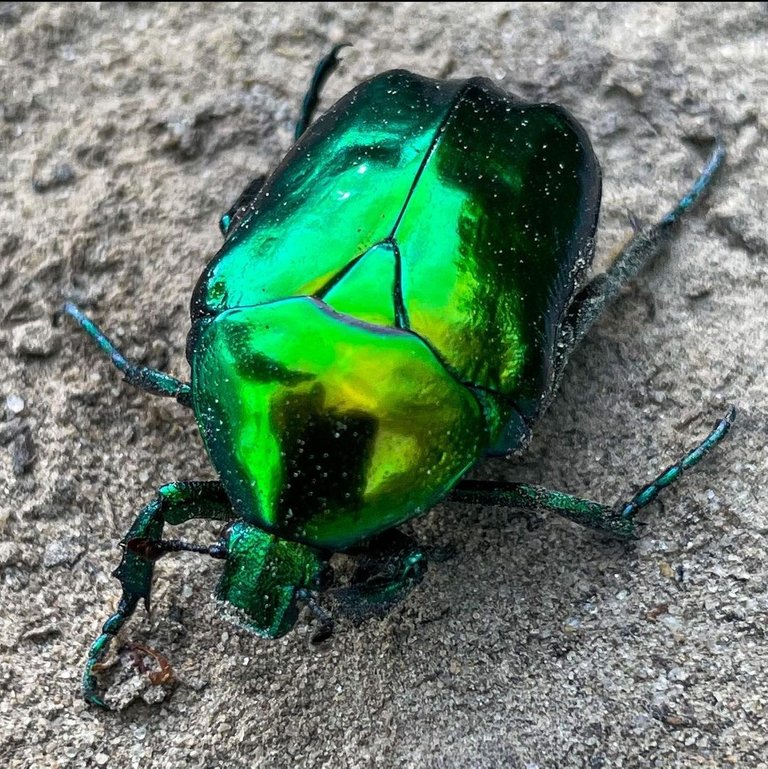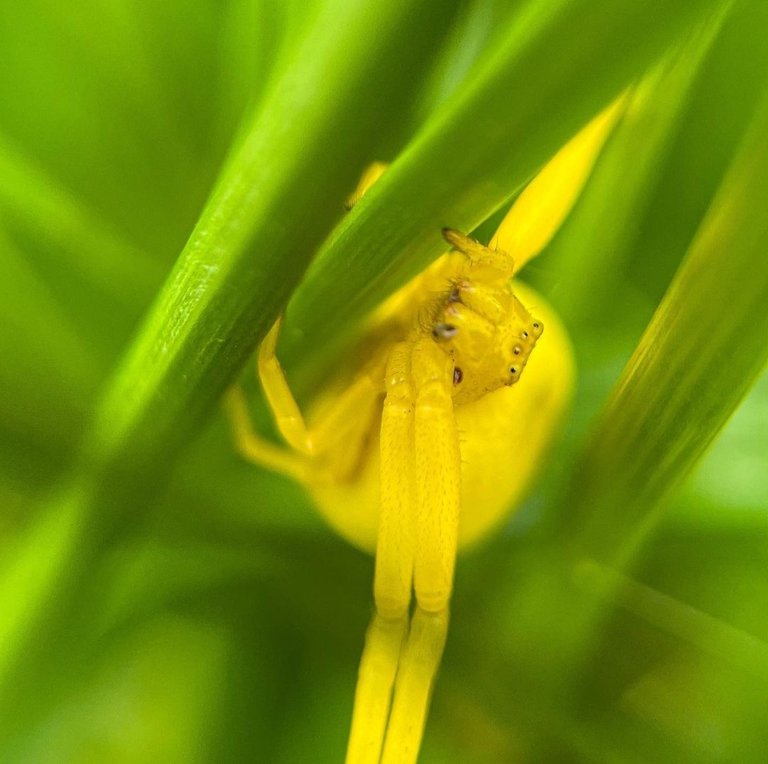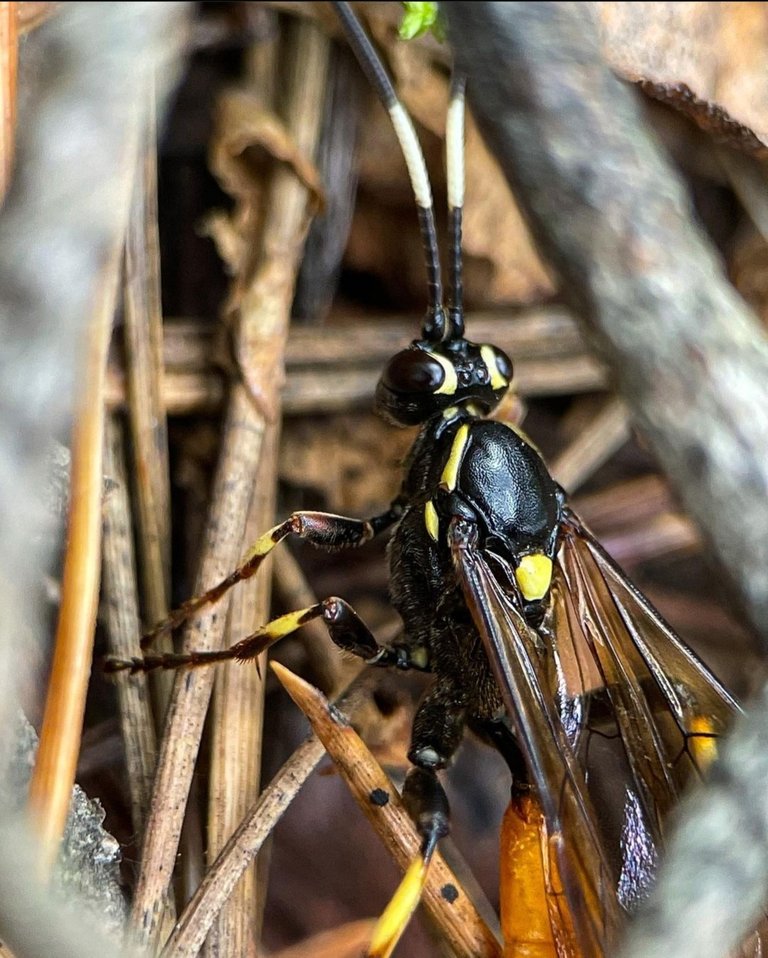
Bronze smooth (Protaetia speciosissima).
It belongs to the family Scarabaeidae, which has about 30 thousand. species.
Body length up to 3 cm.
It differs from the usual golden bronze for all of us by the absence of gray stripes (spots) on the back.
Inhabits old forests and gardens, where large old trees grow.
The female lays eggs in wood crumbs. The emerged larva begins to eat wood, actively replenishing nutrients. The larva can reach 6 cm in length. The pupa is in a cocoon, which consists of 2 layers: the outer hilly, it is formed of wood crumbs, and the inner flat and smooth, formed by the release of larvae. Adults appear in August-September. Reproduction occurs every 3 years. Meet from June to September.
Most of the time they are on trees with flowing sap or on overripe apples, pears, cherries, less often on flowers.
Listed in the Red Data Book of Russia (2 category abbreviated species). To restore the number of species, it is necessary to preserve old trees, especially oaks, apple trees, pear trees.

Flower spider (Misumena vatia).
It belongs to the family of spiders (Thomisidae), which has more than 2,000 species.
This species has a pronounced sexual dimorphism (female and male are outwardly different). The male has a blackish cephalothorax, white to yellowish abdomen with two dark long stripes. Both pairs of forelegs with wide stripes of black and brown, and 2 pairs of hind legs in the color of the abdomen. In turn, the whole body of the female is colored from bright yellow to yellow-green or white. There are often two red stripes on the sides of the abdomen.
In the photo the female.
Body length of males 4 mm, females up to 10 mm.
Lives in open areas with lots of flowering plants.
Meets from May to July.
These spiders do not weave cobwebs, they ambush their prey on flowers, meeting it with the embrace of death. Adult females can change the color of their body depending on the color of the plant on which they are. This is due to the good vision of the spider and the movement of the coloring pigment inside the body. While on a yellow plant, a liquid yellow dye is transferred to the cells of the epidermis, in turn, when on a white plant, the same substance goes to the inner part of the body or excreted from the body.
They feed on various gnats, bees, wasps, butterflies, small beetles, which are often an order of magnitude larger than the spider itself. The spider catches prey with strong legs apart and inflicts a lightning bite to the head.

Protichneumon pisorius, or Protichneumon pisorius.
It belongs to the family of real riders, or their pneumonids (Ichneumonidae), which numbers about 100 thousand. species. Body length 1.2-1.5 cm.
The female lays eggs in a butterfly caterpillar. The hatched larva feeds on the organs of its prey, primarily eating the least vital tissues of the host, so that the victim remains alive for as long as the larva needs to complete development. Most often, the caterpillar has time to pupate, but instead of a butterfly, an adult rider emerges from the pupa.
Adults feed on nectar and need daily water intake, so keep close to water. Adults live 1-2 months.
Yay! 🤗
Your content has been boosted with Ecency Points, by @rangerover1.
Use Ecency daily to boost your growth on platform!
Support Ecency
Vote for new Proposal
Delegate HP and earn more